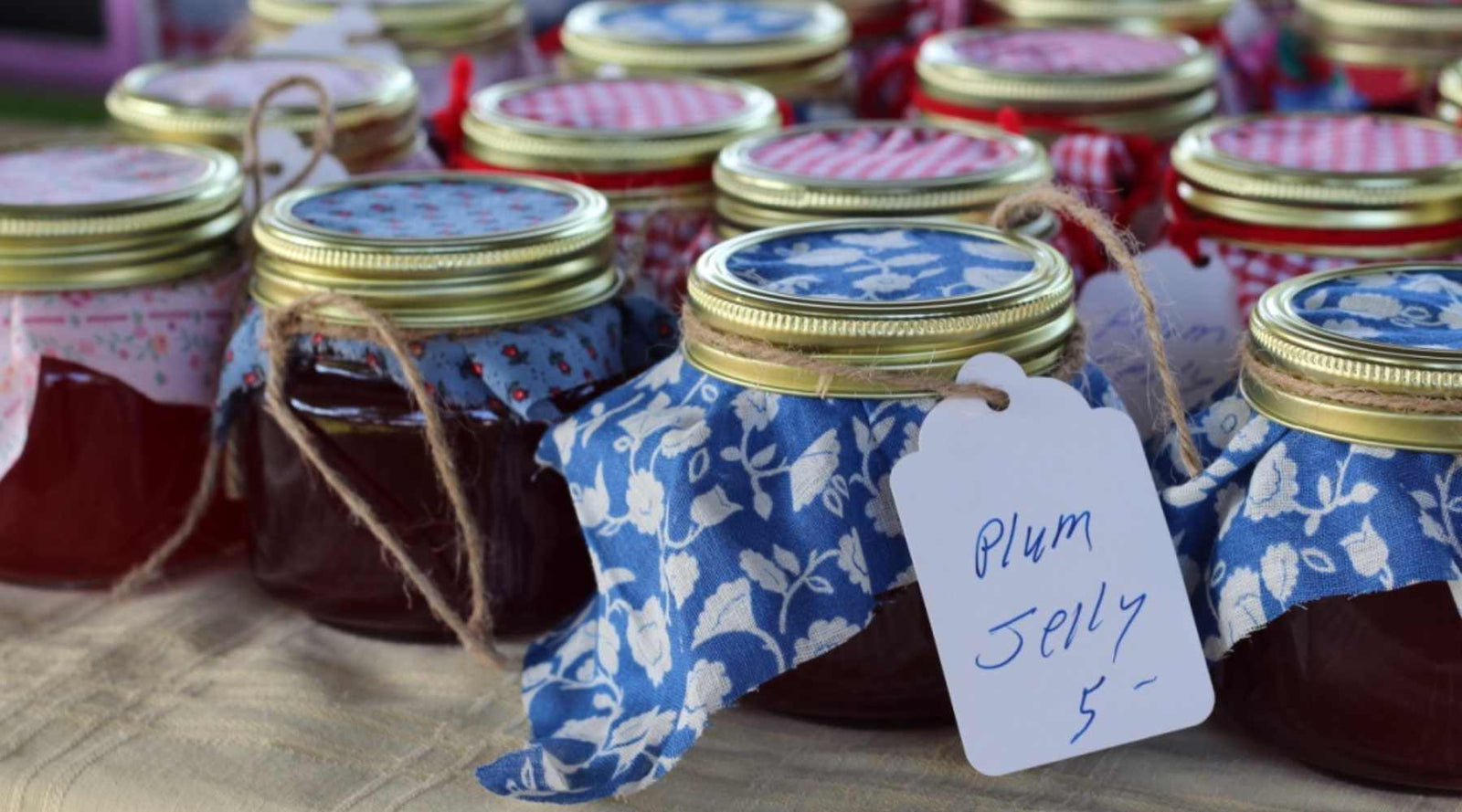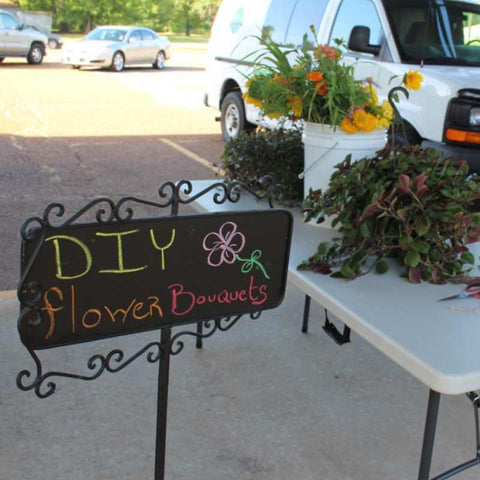Free Shipping on Orders over $75 to the Contiguous US
Free Shipping on Orders over $75 to the Contiguous US
Boosting Your Farm's Income with Value-Added Products
March 11, 2024 6 min read 0 Comments

Value Added Products for the Farmers' Market
Value-added products are a great way to boost your market farm income. Whether you live in a cold region and are looking for ways to extend your market season or are searching for creative ways to utilize bumper crops for extra cash, you’re in the right place.

Creative Market Products
When people visit a farmers’ market, they’re expecting fresh meat, cheese, vegetables, homemade salves, and other similar items. But during early season months when availability is scarce, especially in colder regions, getting creative with items that are related to your farm and market but aren’t necessarily homegrown will allow you to get to market sooner and keep your customers engaged.
Here are a few things you can make and bring to market:
- Crocheted Bags for use as market shopping bags.
- Greeting cards featuring photos of the farm. People love seeing inside the farming world!
- Lavender salt - Add dried lavender and other edible flowers to finishing salt or sugar and jar them up. Lavender salt can be used to season roasted chicken, and sugars can be used to fancy up cupcakes or tea cookies.
- Annual plant starts - Help locals get their home gardens going!

Extend Your Season Into Winter Markets
Storage crops are a smart and economical way to extend the season into the winter months. Crops listed here are easy to grow in mass, fairly easy to store, and are in high demand, especially in northern climates, when not much other than hardy greens grow well in the winter.
- Carrots
- Beets
- Sweet potatoes
- Onions/shallots
- Garlic
- Winter squash
- Parsnips
- Apples
- Cabbage
- Dried beans
If you have hardy greens like kale, spinach, mustard, and chard in the ground when fall temperatures start to dip down, cover them with row cover or build low tunnels or CAT tunnels to protect them with greenhouse plastic. You’ll be surprised how resilient they are!
In some regions, these crops, along with carrots, onions, and parsnips, can be overwintered for early spring harvests. Just watch out for wintertime pests.

Get Creative With Bumper Crops
It’s winter, you’ve got the hankering for something fresh or semi-fresh, and spring is months away. We’ve all been there, right? There are ways we can preserve produce so we can add summer freshness to our winter recipes.
-
Freeze whole, unblemished tomatoes on a cookie sheet. When they’re fully frozen, add them to airtight containers, weigh them, and price them. Sell these in late summer at the market or in a farm stand in the late fall or winter. Have an online store? Offer them here and advise customers to bring a freezer bag when they pick up.
-
Making pesto in bulk when basil is in season is a great way to preserve this iconic summer flavor. Freeze it in Tupperware or small mason jars. Offer a discount on their next sale if they return the container.
-
Blanched and frozen green beans, broccoli, or sweet peppers.
-
Pickled turnips, beets, carrots, peppers, etc.
-
Jams and jellies made from your berries.
-
Salsa and tomato sauce.
-
Dried apple chips and dehydrated fruits.
-
When sales of storage garlic have dwindled, but you still have an abundance available, dehydrate full cloves and process them into garlic powder. The flavor is much more potent than anything your customers will find at the grocery store and should last six to eight months in storage without any preservatives.
- Fresh hot peppers didn’t sell well? Hang them to dry and process them into crushed red pepper flakes to sell at early-season markets. Or string them up before drying them and sell them as kitchen decor. Customers can process them as needed into pepper flakes.
The buck doesn’t stop with produce. This concept works with flowers too. Grow a mix of perennial and annual flowers that are multi-purpose, cut flower bouquets, medicinal uses, and culinary design, and add them to oils and vinegars for aesthetics and flavor. Bonus if they hold up well to drying and can be used in future crafts!

Expand CSA Offerings / On-Farm Events
Crop offerings are becoming more difficult to plan and guarantee as our climate changes. Using value-added items to expand your CSA offerings can help attract new customers, educate your supporters on a new way to use your products, and show that you are an expert in your field, using everything you produce. On-farm events offer a window into the farming world and an immersive experience for customers and farm friends.
-
Perennial flower divisions. If you have established, sought-after perennial plants on your property, why not split them and offer them for sale? Think flowering plants like hollyhock, columbine, and echinacea, but don’t forget about perennial herbs like rosemary and lavender!
- DIY flower crown class. People love doing stuff like this for special occasions like girl’s nights, wedding parties, and birthday parties, especially when it’s taught by the person who not only grows the flowers but also dries them, preserves them, and crafts them into new products that are locally produced and beautiful.
Offer discounts to CSA members, or do a raffle on your social media to get people interested. If you’re not ready to host the classes but love making flower crafts, bring them to fall and winter farmers’ markets to expand offerings during gift-giving times of the year, like Christmas and Valentine’s/Galantine's Day.
- Pick-your-own flowers and farm tours - This is another activity customers love to do. They get to spend time with friends, see the farm, and leave with a unique experience and memory. Provide buckets with clean water, enough snipping tools to go around, and an intro on how to cut stems properly and then let them loose. Put signs up around the farm if there are areas you do not want them cutting from. Charge extra if they want you to give them a full tour and help them throughout the process.
- Pumpkin carving class - This is an awesome way to sell your pumpkins while inviting folks to see your farm, showcase your personality and talents, and, again, let customers leave with a cool experience. They’ll remember your farm not only for your delicious produce and beautiful farm but for the experience you provided.
Collaborate With Other Local Producers
Farming is community-based, so why not collaborate with others in the area instead of trying to grow and do it all? Here are a few examples of ways you can collaborate with other local producers and get more bang for your buck.
- Have a farm stand? Ask your egg-producing neighbors if they have enough to supply for you to sell. Mark them up as needed for the time spent collecting them and putting them on display. Better yet, arrange a trade of eggs for fresh produce.
- Extra beets? Sell them to an ice cream or gelato producer for a unique spin on eating seasonally.
- Grow specialty herbs for a local producer of lotions, salves, and tinctures.
- If you have lots of Japanese turnips in the field, connect with your chef partners and inquire about their ideas of preserving them to use as winter garnish.
- Ask a local baker if they’re interested in using your lavender or dried flowers in their desserts and tag team the marketing of the collaboration.
- Reach out to ranchers in your area about using your vegetables to make local chicken or beef stock. Collaborate on the marketing and sales of it.

Rules and Regulations Regarding Commercial Kitchens
Before using your home kitchen for food products you plan to sell, check into local and statewide rules and regulations regarding the requirement to use a commercial kitchen to legally sell your products to avoid fees or being shut down. Across the states, these may be called homestead or cottage food laws and typically include a monetary threshold.
For example, in New Hampshire, according to the Department of Health & Human Services, a homestead license is not required if you sell your items from your home, a farmstand, a farmers’ market, or a retail food store. Foods must be non-TCS (time and temperature control), and gross sales must not exceed $35,000 annually. All items must be properly labeled. Some states leave the inspections and requirements to be regulated by cities and towns as they choose so it’s important to be informed in your area about what’s required.
Wherever you live there will be differing laws around cottage food industry practices. No matter what the laws in your area state, always follow safety guidelines, including food time and temperature controls, proper refrigeration, safe pickling and canning procedures, and keep your kitchen, supplies, and containers sanitized. Foodborne illnesses are estimated to cause 48 million people to get sick. Follow the four steps to food safety to keep yourself and your customers safe.
4 Steps to Food Safety
- Step 1: Clean. Wash your hands often and disinfect all working surfaces often.
- Step 2: Separate. Avoid cross-contamination.
- Step 3: Cook. Know the right temperatures to cook certain foods at.
- Step 4: Chill. Refrigerate or store items properly and promptly.
Written by Jenna Rich, Partners’ Garden
Subscribe
Sign up to get the latest on sales, new releases and more …
